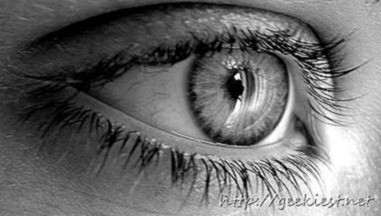
Every office job comes with a computer these days. What was once a problem that primarily plagued those working in technical support services monitor-induced eye strain has now become an issue for just about every member of the worldwide workforce. Fortunately for us, the eye problems provided by computer use are not permanent, but they still influence worker stress levels and the ability to get the job done right. It's for these reasons that people should consider the following ways to reduce the strains put on eyesight by computers and the office environment:
1. Think to Blink
When we look at a computer monitor, we tend not to blink as much as we ordinarily would if we were looking at someone or something else. Blinking, as you should know, lubricates the eyes preventing them from drying out. Dry eyes aren't exactly easy to deal with when staring directly into a rectangle of brightness. Simply remembering to blink often can help avoid a basic eye-related pain caused by prolonged computer use.
2. Take a Break
The Mayo Clinic calls it the 20/20 rule: every 20 minutes look at something besides the monitor for 20 seconds. Ideally, you want to rest your eyes from the monitor for longer than that, but it's a start. It's important to practice the 20/20 rule because otherwise your eyes will be far more maladjusted to viewing non-monitor-based objects and people when the workday is done, which can lead to headaches or even make driving home dangerous.
3. Adjust Distance
The monitor shouldn't be closer than 25 inches from your face and preferably placed at a downward angle from your eyes. Hardcopy references should be positioned so that the neck doesn't have to turn. Otherwise your eyes will be darting around for information straining their muscles in the process. These muscle strains lead to headaches and problems seeing in bright-lit environments.
4. Adjust Brightness
There shouldn't be any glare from office lighting that makes its way to your monitor and therefore your eyes. Lights should be placed so that they offer indirect illumination. Monitor lighting might not be the problem at all, in fact over-lit offices have been cited as the cause of negative emotions and other health hazards. If you find yourself constantly straining to read properly contrasted information on a monitor, check for glare. The office lights might be what are to blame.
5. Adjust Size and/or Get Yourself Checked
Nobody wants to admit they have less-than-stellar eyesight, especially to themselves. Many people continue to read information off of their monitors without taking efforts to enlarge font size. This could be the fix that fixes everything. If not that, then a trip to the optometrist should be scheduled. Pretending a more serious issue doesn't exist only makes it more serious as time goes on.
Most of us are spending hours upon hours in front of a monitor. That time adds up to a serious toll temporarily paid on our eyesight. But this seemingly annoying, yet benign, problem, can lead to bad job performance and even accidents. It's important to know how to reduce eye strain in the workplace, and, if it can't be done, getting an expert's opinion on what to do next.